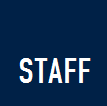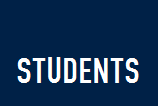 |
 |
 |
 |
 |
 |
 |
 |
 |
|||
 |
 |
||||||||||
Guide to being Lead Author of a PaperMotivationThe principal metric of scientific work is a paper in a respected international journal. On average I expect a thesis to produce at least one paper and a post-doc to be the lead author of one paper per year. The IdeaBefore committing fingers to the keyboard it is worth reflecting on why you are writing this paper. If the only answer is "To get published and improve my C.V." then stop now and do some research. Questions that may help to order your ideas include
There are two types of ideas for papers Type A: The brilliant inspiration that means you have solved some intractable problem that anyone could present if they had your insight. Type B: Embodied by a slight variant of Edison's maxim, "research is 1 % inspiration and 99 % perspiration". In this type of paper you have a good idea but you need to spend lots of energy in the data analysis, model runs or whatever. Here it is assumed that you have a Type B paper. Step one is to discuss your idea with another scientist you respect and trust to see if there is an obvious error in your approach. The person you talk to may be your supervisor, colleague or potential co-author. Listen for the phrase, "that's a good idea - it is worth publishing before someone else does". If there are no obvious flaws then even if the person is luke warm on your idea then it is still OK to continue. If the paper really is a lemon then this will become apparent later on. Co-authorshipStep two is to recognize the contribution of others to your idea. Your laboratory may have strict rules on who should be included (check). If not then these are the principles to follow
Once you have identified any coauthors then step three is to discuss and decide with them
This may be easy if you all share the same office but often co-authors are at different institutes in different time zones. Then the responsibility falls on the lead author to initiate and progress the discussion. The best way to do this is to circulate a draft of what needs to be done (e.g. a draft structure of the paper indicating who does what) and give people a fixed time to respond. It is always good to add a phrase like 'if I do not hear from you by this date then I will assume you have no issues with the structure'. This gets round the fact that often co-authors do not respond as they think what you have written is fine. Drafting the PaperStep four is to draft and collate the paper. Being lead author is a bit like driving a car with your co-authors as passengers. They will all have advice on where to go, when to stop and may even squabble a bit in the back seat. However you are in control and will be the person who is appreciated if you get them to the end of the journey safely and in good time. The paper will generally follows the usual scientific structure, i.e.
Once you have a full draft you should (step five) circulate it to your co-authors for comment. Again, provide a clear date for them to respond by stating something like 'unless I hear from you by this date I will assume you have no substantive comments on the manuscript'. Give people at least two weeks to comment. If the co-authors comments led to substantial changes then you should circulate the manuscript again. This should be repeated until the changes are no longer substantive. Often manuscripts only need one circulation. If they are experiencing substantial changes after three circulations then there is either disagreement between the co-authors or the manuscript is incoherent. As lead author it is your responsibility the paper has a consistency of style and presentation. Follow the journal's advice on style. Nothing will irritate co-authors more than
Depending on the number of revisions your paper can take several months to compete. During this time it is often worth presenting the paper as a poster or as a seminar (including your co-authors as co-authors). The feedback you get helps anneal your ideas and allows you to rebut criticism before they occur in the initial manuscript. SubmissionOnce you have the final draft then step 6 is to submit the manuscript and figures. Make sure you have followed the journals instructions. If the submission process allows you may want to include a short cover letter explaining to the editor the new idea in the manuscript. Responding to Reviewers' CommentsAfter some time you will get a letter saying the paper needs
Step 7: Share the reviewers' comments with you coauthors and suggest a way forward. If the paper has not been rejected then this involves modifying the manuscript and drafting a response to the editor explaining the changes you have made. This response needs to be circulated with coauthors to be sure they are happy. If the paper has been rejected you need to discuss the best response with your co-authors. This will either be a substantial rewrite or submission somewhere else or both. When you respond to reviewers' the number one and inviolable rule is to be polite. Do not call the reviewers simpletons or abuse them in any way. Other rules to follow
There are two cases where you may not follow the reviewers' advice
From the Editor's PerspectiveThe worst sought of papers to receive as a journal editor are
Often these sorts of paper are picked up and rejected by editors. An obvious question to ask is how so many bad papers get published. I have two theories on this. I think the first accounts for 90 % of bad papers, the second for about 10 %. Publishing by probability: The average number of reviewers for a paper is less than two. Most reviewers are conscientious however it is an unrewarded job and they face no penalty for getting it wrong. When faced with research and teaching commitments there is a finite time a reviewer can give to a paper. There is a non-zero probability that a paper will be skim read by the reviewers and flaws not identified. When confronted by two nondescript but vaguely positive reviews the editor is most likely to accept the paper. Publishing by attrition: Often papers are recommended to have substantial changes. A list of these corrections is returned to the author. Two weeks latter the same paper comes back with some of the points addressed, others ignored and a covering letter saying the manuscript has been completely rewritten. It goes out to review and again it is recommended to have substantial changes. After going round this loop 3 or 4 times the reviewers and the editor lack the will to live and accept the paper subject to minor changes. These are made and the paper appears. RGG 2010 |
||
| Earth Observation Data Group, Department of Physics, University of Oxford. | Page last updated: @20:58 GMT 30-Nov-2025 | |